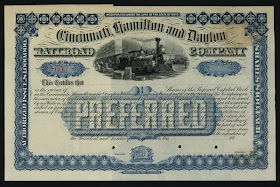The London stock exchange is actually divided into two parts. The first part is the main market, for which companies need at least three years of audited accounts to become members. The second part of the exchange is the Alternative Investment Market, otherwise known as AIM.
AIM offers a market for those shares that either cannot obtain or do not want a full listing on the main market (also known as the Stock Exchange's Official List). AIM is targetted at smaller companies with fewer costs and formalities in obtaining a listing. This often attracts younger and fast growing companies.
The Alternative Investment Market started on the London Stock Exchange in June 1995 and at the end of 1996 it replaced the Unlisted Securities Market.
In the early days, AIM was viewed as a 'high tech' home for UK stocks, rather like the NASDAQ in America. However, this was in part due to the massive rise in technology stocks (TMT) in the late 1990s that became the 'Internet bubble'.
AIM now hosts a wide range of small companies in almost every imaginable area - including a number of companies that are not even UK companies but wanted a UK listing.
It goes without saying that in many of the companies listed on AIM, liquidity is lower than might be the case elsewhere on the LSE. This is in large part due to the smaller relative size of AIM companies, but also because not all stockbrokers deal in AIM stocks.
How The London Stock Exchange Information System Works?
The London Stock Exchange is the oldest major financial market in the world but it is now no longer the largest. In March 2005 there were over 2500 companies quoted on the London Stock Exchange market including over 300 from outside the UK.
To be granted permission to be listed on the stock exchange companies must satisfy certain conditions and then others on an ongoing basis. One of the conditions is that companies must have a trading record of at least three years before they can obtain a listing.
There are currently two different trading systems:
SEAQ is the Stock Exchange Automated Quotation System and is a quote-driven system. Market makers compete, transacting amongst themselves and dealing with the public through brokers (also known as dealers). Trading is done by phone.
SETS is the Stock Exchange Electronic Trading Service and is an order-driven system. It allows brokers to post orders and trade automatically through an electronic order book. This eliminated the market makers role. SETS is limited to FTSE 100 stocks and some FTSE 250 shares.
London Stock Exchange Information System - SEAQ:
SEAQ stands for Stock Exchange Automated Quotation System.
Now there are more then 1500 listed companies whose bid and offer prices are quoted on SEAQ. SEAQ is essentially a price-information service and not a trading system. It can be accessed through a number of screen based information services. Trades are therefore carried out either by phone or online. SEAQ provides:
- prices quoted by market makers
- the number of trades reported (above £1,000 in value)
- the best bid/offer prices with upto three market makers prepared to deal
- an automatic trade execution service
If you need more informations please go to SEAQ
London Stock Exchange Information System - SETS:
The basis of SETS was launched by the London Stock Exchange in 1997. It was designed to cater for FTSE 100 firms and the largest of the FTSE 250 companies. Since then the system has (as ever) undergone significant change. The main points of the SETS system are:
- London Stock Exchange SETS deals go through brokers.
- The brokers enter buy and sell orders through an electronic order book.
- Market makers have no role in the transaction - thus removing an added layer of costs.
There is no minimum order size. This is very useful to the private investor. The arrival of PEPs and ISAs (both tax advantaged investment plans which effectively hold shares in a nominee type account) meant that many private investors might own a portfolio of shares but never receive annual company accounts. SETS makes it easier to purchase small holdings (many investors now own a number of shares in their tax wrapper and just one share in their own name to ensure that corporate documentation arrives).
Orders may be matched against more than one opposite trade in the order book. The Stock Exchange Electronic Trading System operates on a T+3 basis which means that the financial aspects must be completed on the third working day after the trade.
London Stock Exchange SETS orders are either:
- At best which means the trade is carried out at the best possible overall prices
- Execute and eliminate is also known as immediate execution. Any amount of an order that can be completed at a set price is done - everything else is discarded.
- Fill or kill involves the trade being done at exactly the terms specified in the correct volume - or nothing is done at all.
- Limit orders remain on the SETS screen. They are set for prices that are 'no worse than' and may be filled slowly over time. An expiry date (max of 90 days) prevents these orders running for too long.
If you need more informations please go to SETS
Now let's go and see what requirements a company has to meet, before it can be listed on the London Stock Exchange!
























